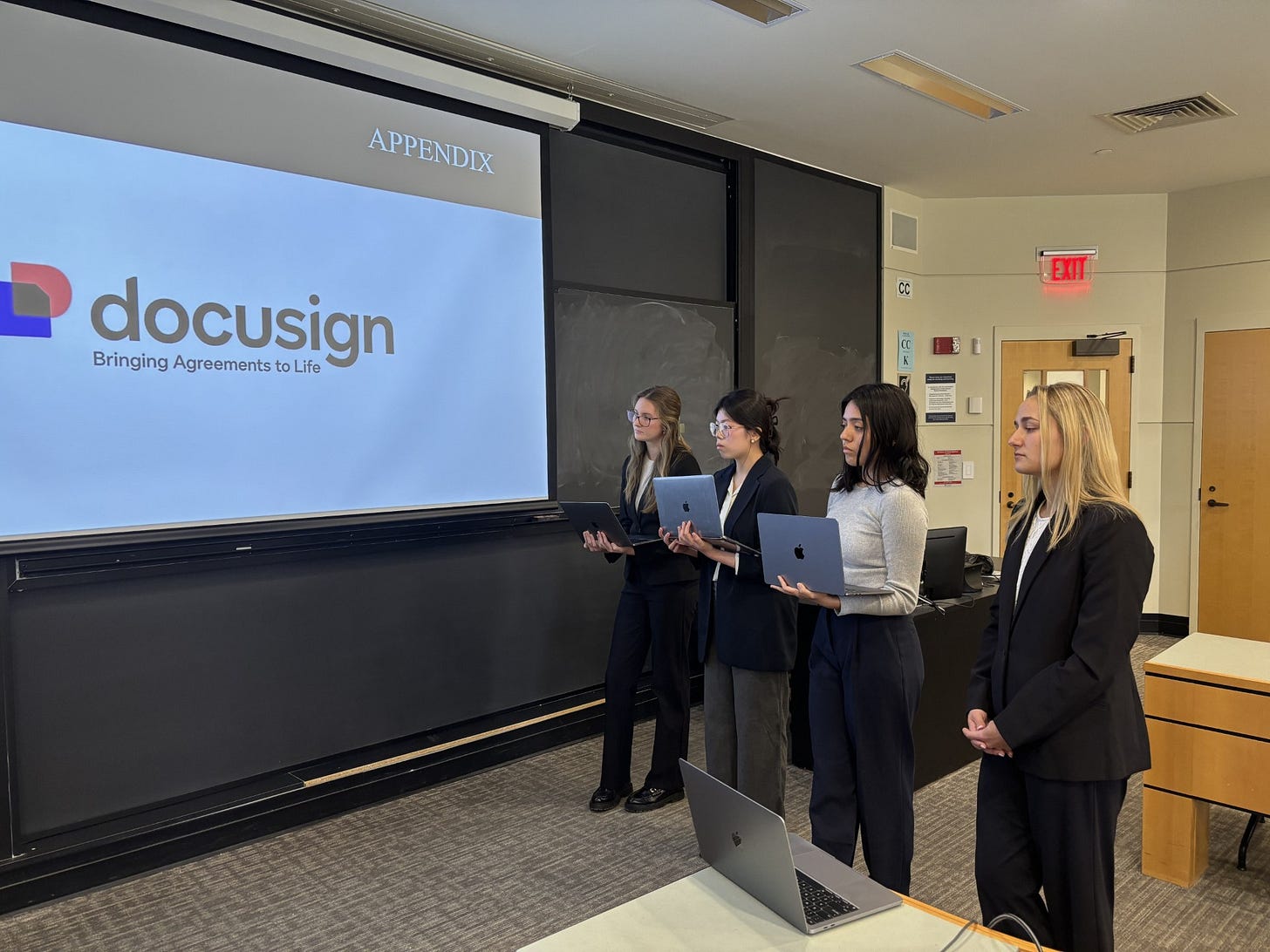The long-awaited day had come. The day we have been envisioning since the first semester of the Opportunity Fund Project. The day we have been preparing and working toward all of second semester. The first pitch day was the biggest challenge for students in this program.
For the past seven weeks, our three teams in the Spring 2025 AIA class have worked diligently to perfect their slide decks and reports, all in hopes of winning over the investment committee with their theses. Our hard work had finally led up to the 10-minute presentation, followed by 20 minutes of questions.
All week, I meticulously changed the wording and graphics on my slides. I forced my STEM major roommate to listen to me practice (who had no idea what I was talking about but was still supportive). I anxiously counted down the hours until Friday at 12:30. Each group put so much effort into their pitches, it was scary to think that all our hard work was being judged in a 10-minute presentation.
I woke up on Friday morning with a sense of urgency. I got ready quicker than usual, aiming to leave myself enough time to run through my slides a few more times. In my two classes prior to this one, I could barely pay any attention. I clicked through my slides, imagining I was the investment committee, and wondered what they would think. What kind of questions would they ask me? I did some quick last-minute research in between classes, desperately trying to cover every possible gap in my knowledge. I would rather be over-prepared than caught off guard.
I entered the classroom and asked my teammate if she felt ready. She responded with a nervous laugh, which eased my nerves. Her fears made me feel less alone, knowing we could tackle challenges and difficult questions as a team. As my peers in other groups filed in, I noticed everyone had the same demeanor: smiling through the nerves. My group was presenting second out of the three groups—the perfect order. We could see how the first group navigated questions, but didn’t have to anxiously wait until the end of class to present.
Hoping to distract us, Steve joked “You will all leave here alive.” He was aiming to calm the very obvious tension in the room. A few long minutes later, the first group went up to present. I paid close attention to what questions they were asked and how my peers answered them. I took mental notes in preparation for my pitch. I scrambled on my computer, googling last-minute details I needed a refresher on.
After minutes of fidgeting in my chair, it was our time to present. I had an awareness of where my nerves were stemming from. I don’t get nervous about public speaking, especially in my small class, so I knew I was nervous for the unknown questions I may be asked. All I could do was tell myself “I know more than I think.”
As we started presenting, we very easily got into our groove. We were presenting just as we practiced and felt confident and comfortable. I tried my best to remember the advice I was given: don’t read off the slides and don’t explain every little detail. After we had finished, it was time for the questions. The part I was most dreading. It is scary to be put on the spot in front of professionals, all while trying to sound intelligent when, in reality, you may not understand what they are asking. Staying composed, I answered questions as best as I could, hoping to impress the committee. My team and I were able to navigate each question, leaning on our preparation and each other. We referenced our materials, backed up our points, and showed our understanding. As we finished up, I took a deep breath. I was excited that my team did so well, and our hard work was appreciated by the investment committee.
It’s easy to get caught up in a project, but once it’s over, you realize that how well it went isn’t the end of the world. As we sat down, my teammate said, “Now it’s time to do it all over again.” There is always room for improvement, and now my team can approach our next pitch with more confidence.




